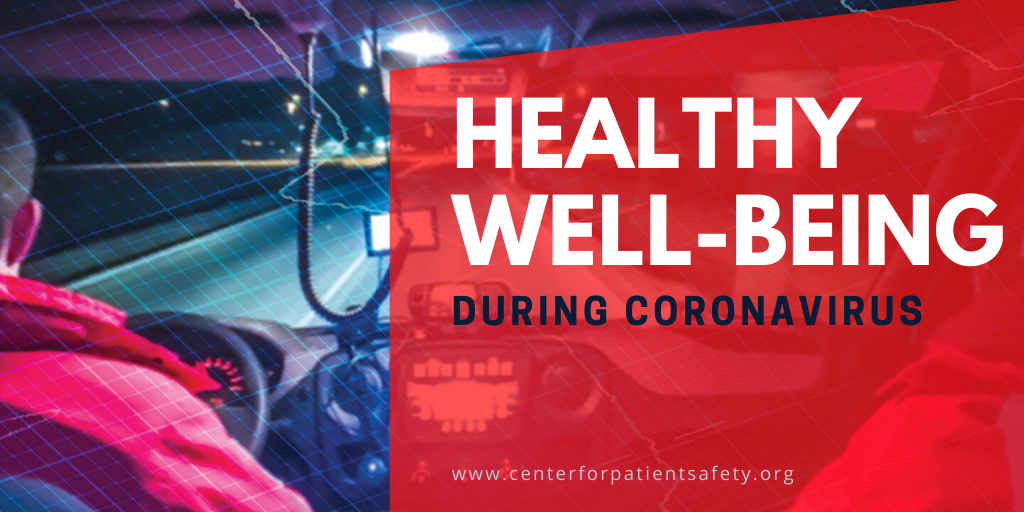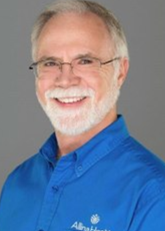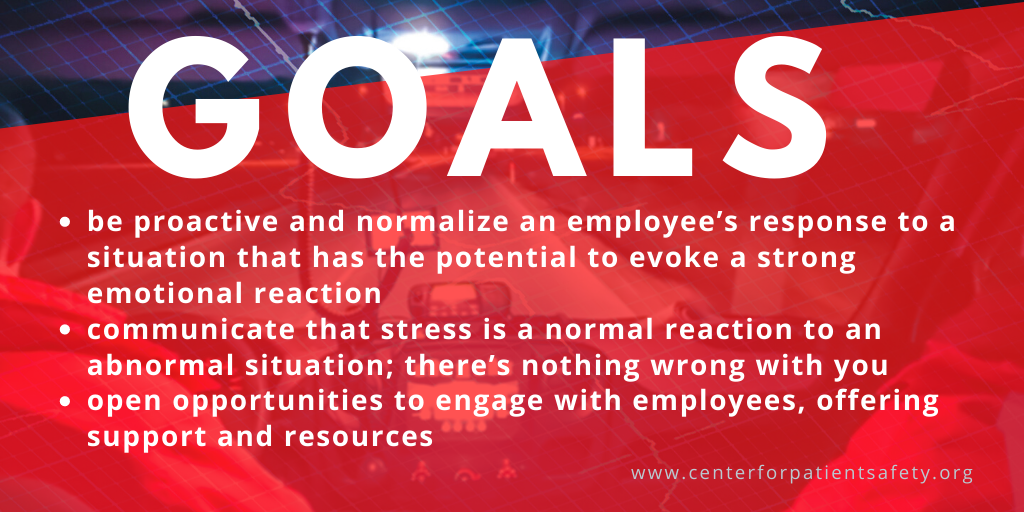Healthy Well-Being During Coronavirus

It would be an understatement for any of us to say that these are stressful times. Quarantine; school at home; social distancing; lack of interaction with others. Now let’s say you go to work each day, donning personal protective equipment that is uncomfortable and hot, knowing that any given ambulance call you respond to brings a likelihood of contact with Covid-19 patients.
That’s what it’s like for folks in the field of paramedicine, and it’s taking a toll. As of May 25, 2020, 2,257 agencies have reported to the International Association of Fire and EMS Chiefs that they have 12,473 staff quarantined and 708 diagnosed positive for Covid-19. Counting Covid-19-related deaths among providers is a challenge due to a lack of standardized reporting around the county. But it is believed that several dozens of EMS providers have died from Covid-19. An unsettling reality, to be sure.
We reached out to two experts in the field of occupational mental health and well-being to ask for advice.
 P. Daniel Patterson, Ph.D. and practicing paramedic, serves as an Associate Professor in the Department of Medicine at the University of Pittsburgh. He is widely published and studies safety in emergency care settings with special emphasis on safety culture, fatigue, shift work, sleep health, teamwork, medical errors and adverse events, and clinician injury in the prehospital EMS setting.
P. Daniel Patterson, Ph.D. and practicing paramedic, serves as an Associate Professor in the Department of Medicine at the University of Pittsburgh. He is widely published and studies safety in emergency care settings with special emphasis on safety culture, fatigue, shift work, sleep health, teamwork, medical errors and adverse events, and clinician injury in the prehospital EMS setting.
Recently, I had a conversation with Dr. Patterson and asked for his thoughts related to supporting the work and well-being of front-line EMS providers.
These are some of his paraphrased comments:
- Many EMS clinicians are experiencing a dramatic increase in occupational stress and strain on mental health. They are concerned for their safety and health, and for their families. As the rate of stress, anxiety, and other mental health effects increases, leaders become more concerned about workers leaving their job or the EMS profession.
- While work-related stress is nothing new to EMS, no one in EMS has experienced anything like the COVID-19 pandemic. That means that everything we thought we knew about identifying and treating occupational stress and mental health in EMS may no longer apply.
- We need to respond to this pandemic by rapidly understanding the impact on EMS workers’ mental health and use this new information to tailor interventions. Previous research is informative, but this is a new time with a new, never-before-seen challenge. More research is needed, and it is needed now. With increased understanding, we will be better prepared to mitigate the ongoing impact and update treatment, so it is more effective.
Patterson is currently seeking a grant from the National Institute for Occupational Safety and Health (NIOSH) to study the effects of the Covid-19 pandemic on front-line providers. If awarded the grant, Dr. Patterson intends to interview and survey significant numbers of providers who have worked in hotspots of the outbreak, as well as those who have not. He reminds us that one doesn’t necessarily have to be in the thick of the turmoil to be impacted by the resulting stress. It’s like when we hear about an EMS provider you may not even know who is involved in a traumatic event (a critical ambulance crash or a serious assault). One of our first reactions is “that could happen to me.”
I can very much relate to this. I was a young paramedic when the AIDS epidemic broke out in the mid-1980’s, long before effective therapies were developed; and a diagnosis of AIDS was usually a death sentence. I eventually cared for several AIDS patients; but when the disease first surfaced, my community was certainly not a “hotspot.” Nonetheless, I changed my behavior out of fear. The level of stress at my agency increased as everyone was trying to understand how to deal with AIDs, not unlike the current situation with coronavirus. I became a chronic hand-washer, was cautious about contact with body fluids (which I had previously been cavalier about), and often changed out of my uniform before entering my house after work.
Dr. Patterson states that Covid-19 has caused him to alter his behavior in his own practice, too. He shared an anecdote about a recent patient demonstrating symptoms of Covid-19. He said while he certainly provided appropriate care, because of circumstances and proximity to the hospital, he deferred an intervention he might have done prior to Covid-19.
His advice to all of us is to have confidence. Certainly, you need to take appropriate personal precautions. But he added, “What I never want to do is reflect back after an encounter with a presumed Covid-19 patient and wish I had done better.” Good counsel during scary times.
Dr. Patterson’s research is certain to add to the scientific body of knowledge that will help us take care of our patients, ourselves, and our families.
 Rev Russ Myers, B.Min., BCC is an EMS Chaplain I worked with for several years while I was at Allina Health EMS, who brought decades of experience as a hospital Chaplain and previous service as a congregational Pastor.
Rev Russ Myers, B.Min., BCC is an EMS Chaplain I worked with for several years while I was at Allina Health EMS, who brought decades of experience as a hospital Chaplain and previous service as a congregational Pastor.
Russ joined the EMS team in January of 2007 as a part-time EMS rookie in a support function role. We quickly discovered the value and results of the work he did. Soon, his hours increased, and eventually, he was full-time on our roster.
Early on, Russ took an EMT class and sat in with dispatchers, not to practice paramedicine but to better understand what the work was all about. As an academic who had earned multiple advanced degrees, he once told me his EMT training was some of the most rigorous education he had experienced. He coupled those experiences with his background in academics and divinity to craft a hands-on approach to offering provider support.
From Russ, I learned that the work of a Chaplain is all about support. A hospital or EMS Chaplain supports the entire spectrum of patients and providers. Some with strong religious views may want someone to pray with them in a time of need; others simply need things like food support or someone to walk their dog. A Chaplain meets people where they are, and I think that’s an important lesson for leaders in paramedicine. Making a difference to a person experiencing tough times is all about them, not us.
He has an office, but he is rarely there – and that’s by design. Most of his time was, and still is, spent in dispatch or on the ambulance, spending time with front-line providers and cultivating relationships with the troops. The premise has always been that if someone is struggling in any way, they are much more likely to connect with a person with whom they already have a relationship. This has been borne out several times in our survey data showing that front-line EMS staff are far more likely to talk to someone they know, like our Chaplain who regularly hangs out at our bases, than visit any corporate EAP program or use an anonymous telephone helpline.
When we started our Chaplain program, we did so on blind faith, with no supporting data, but thinking it was the right thing to do to support our people – and it was. However, it soon became evident that there is a powerful business case for providing support to staff.
A culture of gratitude and support, whether nourished through the work of an on-site Chaplain or other means, increases recruitment and retention. At a time when there is a significant national shortage of paramedics, an agency with a reputation for truly caring about its people enjoys a strategic advantage in recruiting. Additionally, we knew that losing a new employee within the first year of employment cost us approximately $75,000 – and I’m not talking about wages, but rather orientation, site-specific training, uniforms, equipment, and other onboarding costs. By focusing on caring about our people, we were able to hold turn-over to around 7% or less for many years, not typical in EMS agencies.
Providing the opportunity to be a part of something bigger than yourself will become increasingly important in these days of Covid-19. There are concerns among EMS leaders across the country that paramedic students may choose not to enter the profession thinking “this is not what I signed up for”. Those paramedics early in their careers may be equally anxious to leave it. Cultivating a culture of high expectations with high support will help EMS agencies recruit and retain quality employees.
I recently asked Russ, “How do you support your co-workers, your family, and yourself during the Covid pandemic? He answered, “Graciously. Be gentle with yourself and each other. I’ve heard it said that ‘we’re all in the same storm, but we’re not all in the same boat.’ We’re all experiencing loss, some more acute than others. One day the skies will clear. In the meantime, be patient. Listen to the stories of those around you, who are riding out this storm in a different boat. You may be the lifeline that gets them into the port.”
Lastly, sometimes it’s hard to know what to say, when a friend, co-worker, or employee has a tough experience or just isn’t acting like themselves. How do you open a conversation about mental health and well-being, especially when we have for so long expected those in the helping professions to suppress their own emotions?
Some time ago, Chaplain Myers gave the guidance below to his leadership colleagues. He shares it freely and says that anyone reading this may feel free to borrow liberally and apply it to your own situation:
Suggested Phrases to Start a Supportive Conversation
Author: Russ Myers, Chaplain Allina Health EMS & Security
These are examples of phrases to use with employees following incidents that may have been emotionally challenging. These scripts can be used verbally or adapted for use in a text message. 
- “Checking in with you after the __________ incident. Sounds like it had the potential to be stressful. How are you doing?”
- “I saw the report on the ________ incident. I know it’s been a couple of days, and I apologize for not following up with you sooner, but I wanted you to know I’m aware of it and am available if I can be of support.”
- “That ______ incident sounds like it might have been a challenge. I’m here if you’d like to talk.”
- “I’m following up with you about the __________. I hope you have people to talk with. Let me know how I can be of support.”
- “We’re working on being more intentional with our follow-up after [name type of incident], so this is a routine check-in. Different people have different reactions to these things, and I don’t want to assume anything one way or the other. How are you?”
Sometimes we are asked to check on someone without revealing who made the request. I appreciate the concern, but I may point out that:
- their co-worker will probably know who it was
- I don’t want to get in the middle of their relationship, whatever it is
- your friends might appreciate knowing that you’re concerned about them
A phrase to try when following up with the person who is the object of the request:
6. “[One of your co-workers] mentioned that you seemed to be taking the __________ incident pretty hard. He/she was concerned about you and asked me to check in with you.”
These steps are all part of a healthy, strong culture. The Center for Patient Safety offers a culture survey tool to understand better how the staff feels about your organization. The Patient Safety Culture surveys ask staff about many relevant topics: information exchange, communication, communication openness, organizational learning, and leadership support for safety. This provides a snapshot of your staff’s perception and can help you craft a roadmap to delivering the kind of support that will help differentiate your agency and support your providers.
.png)